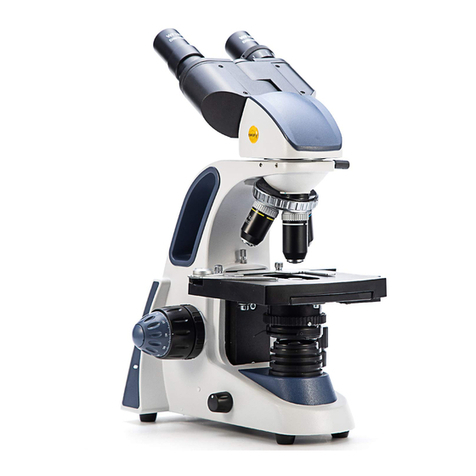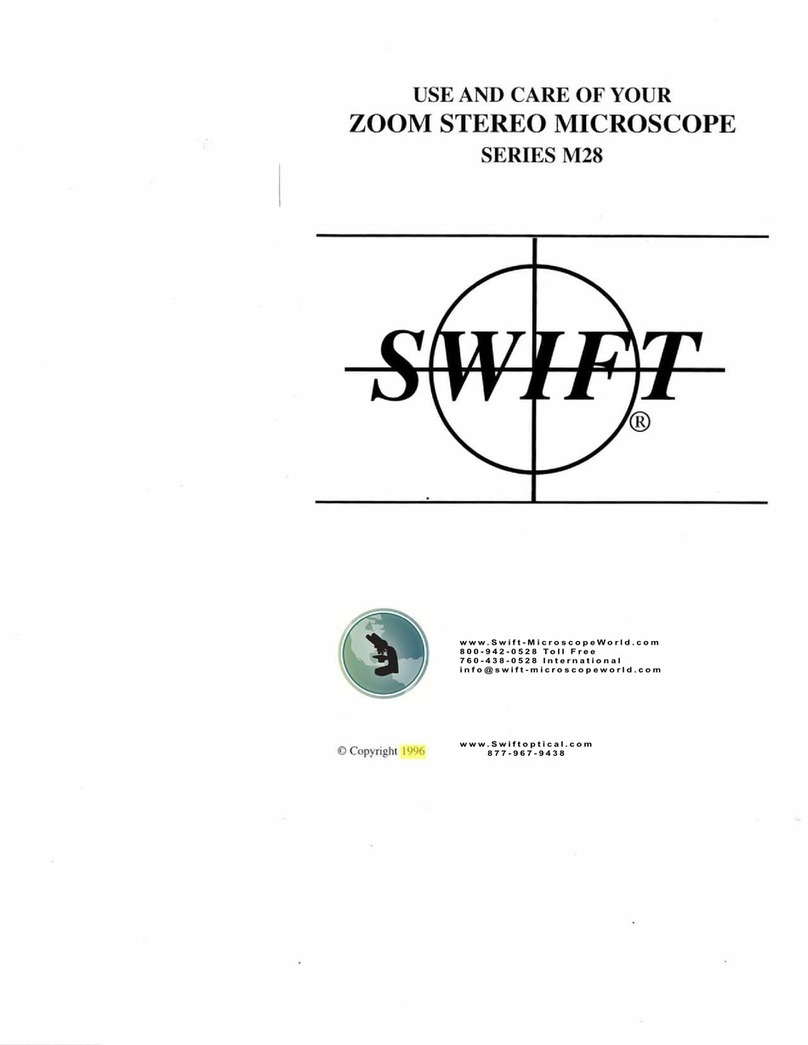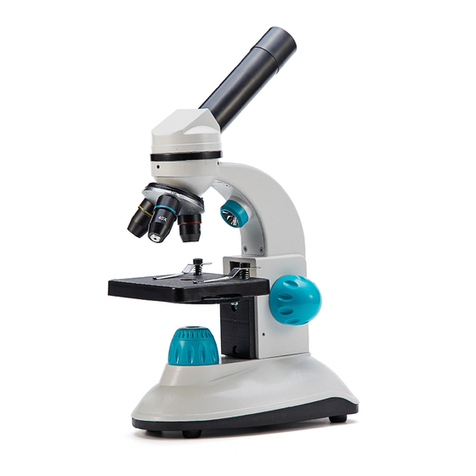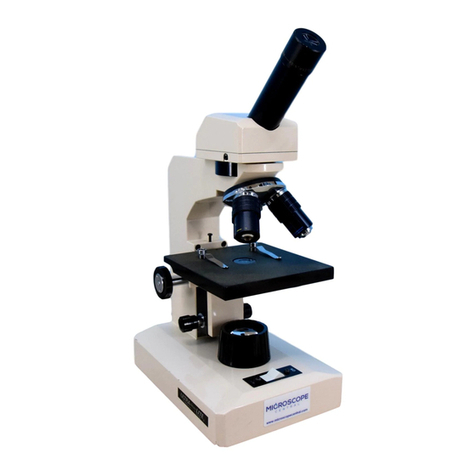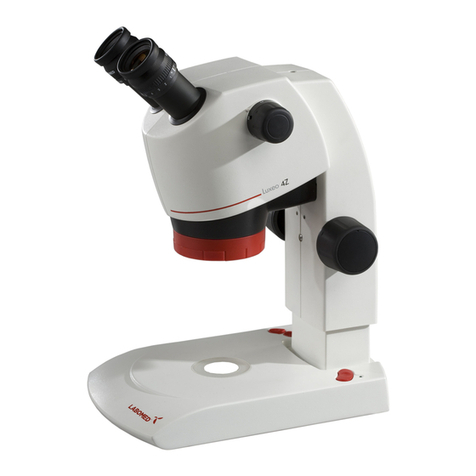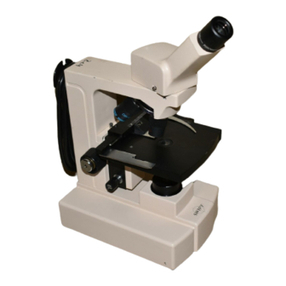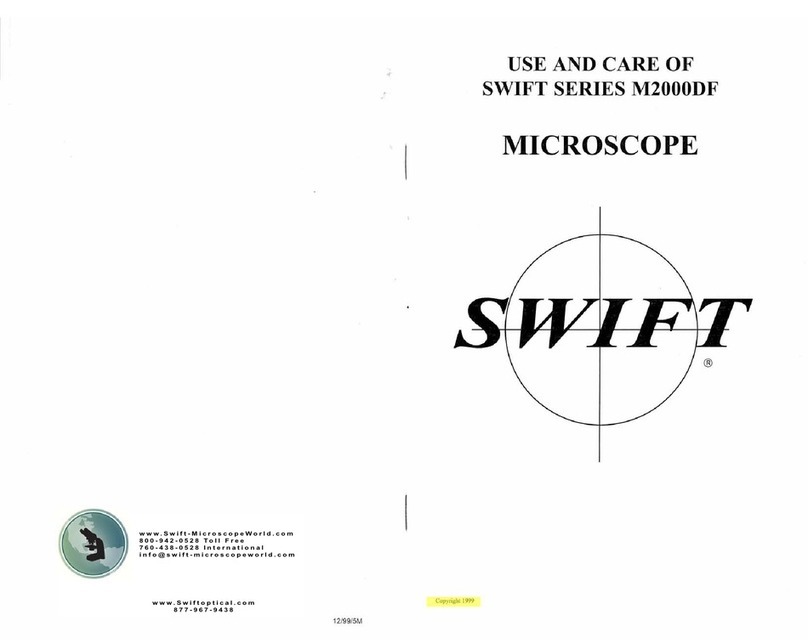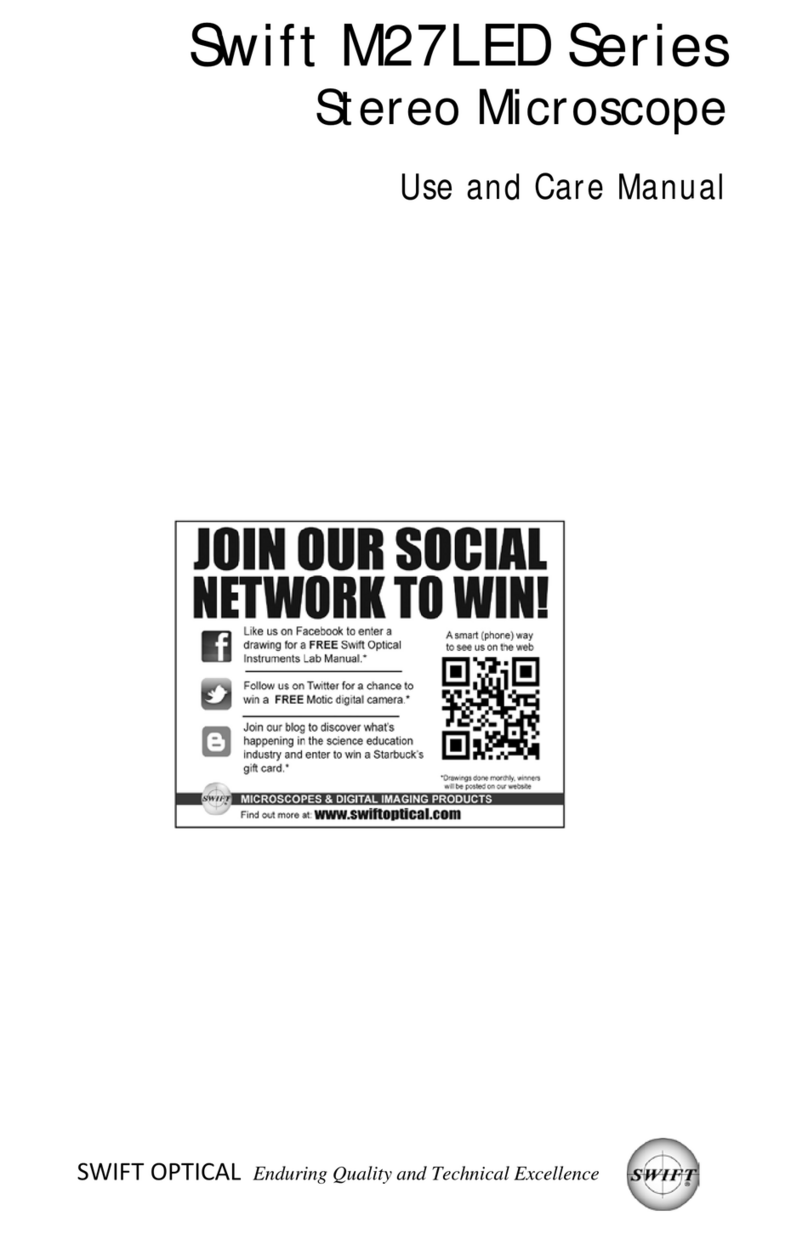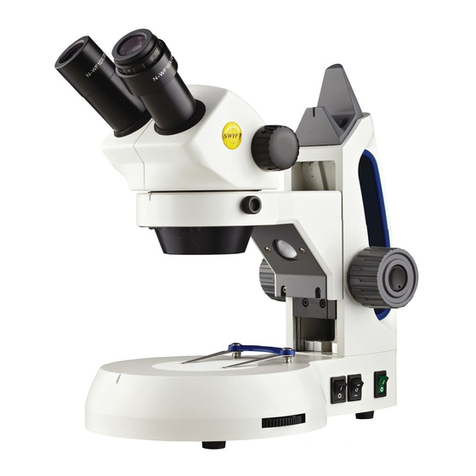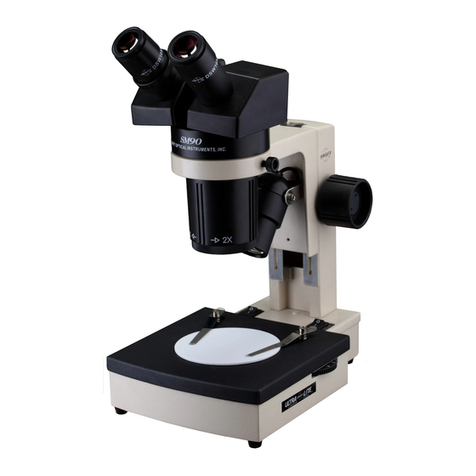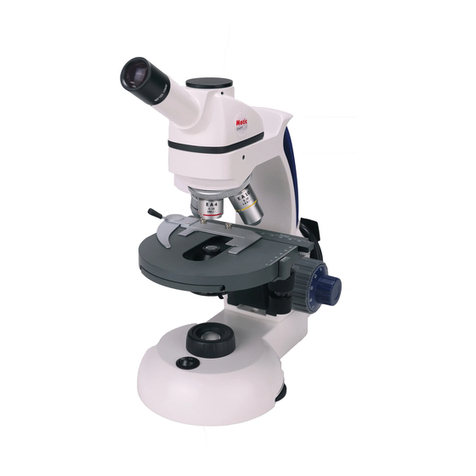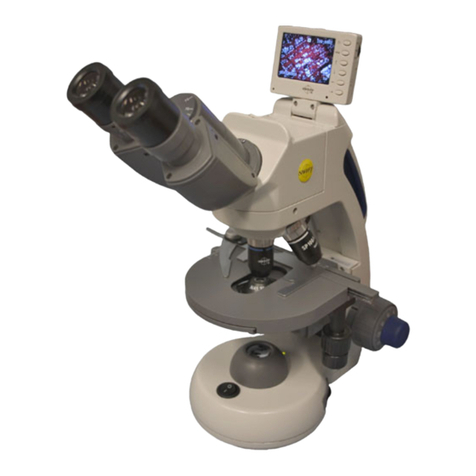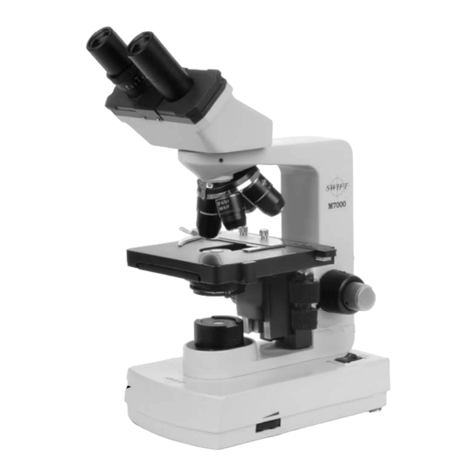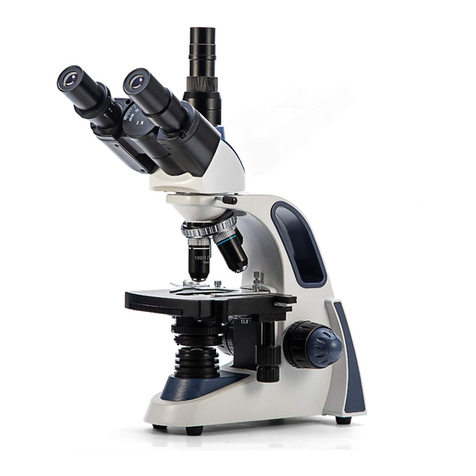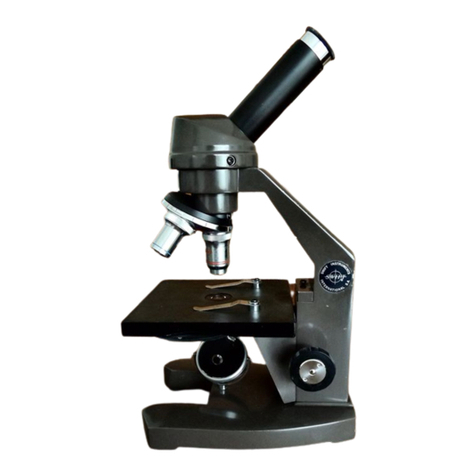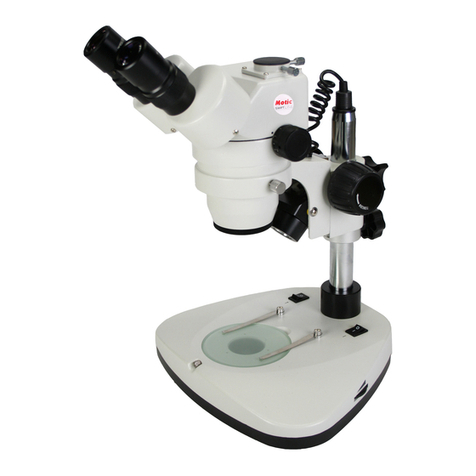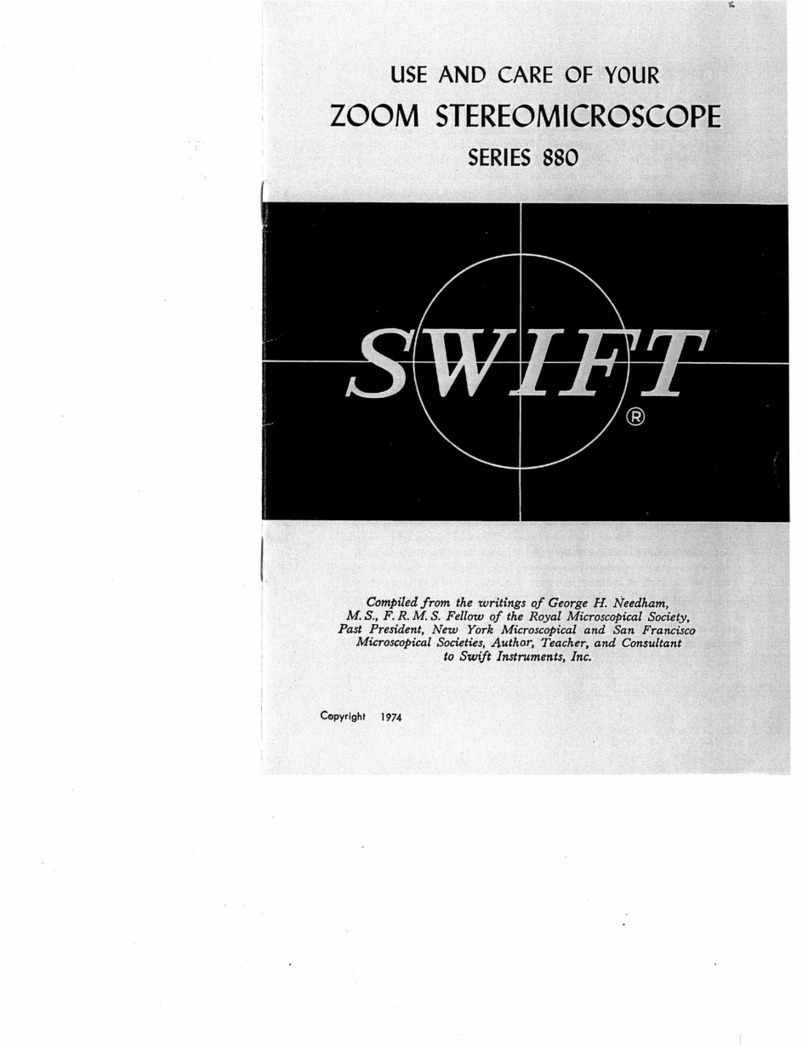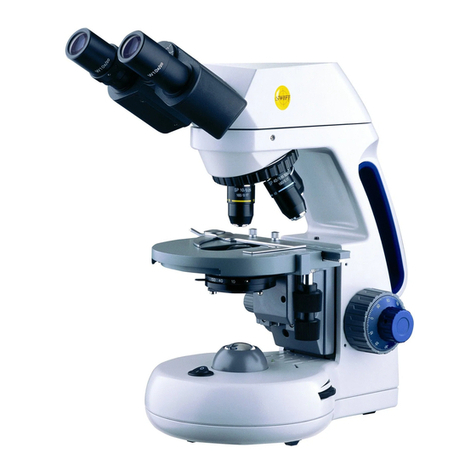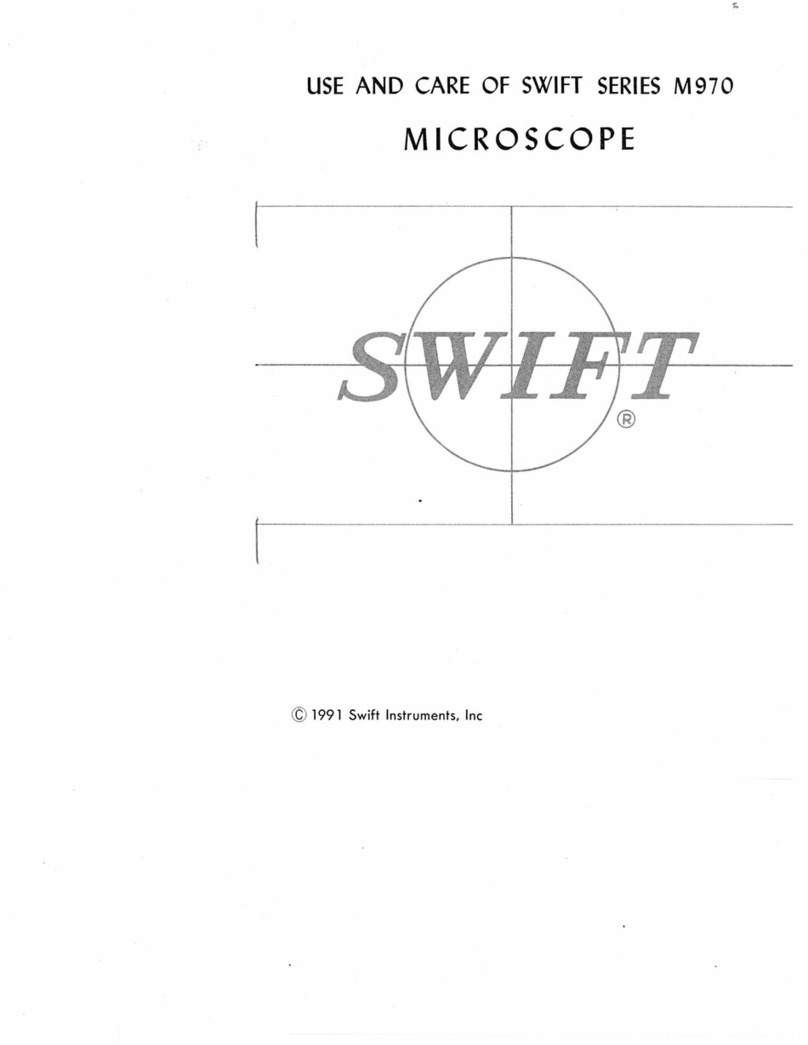CARE OF YOUR SWIFT SERIES M2252DGL MICROSCOPE
Swift M2252DGL microscope is designed to function satisfactorily with
minimum maintenance. Certain components should be cleaned
frequently to ensure ease of viewing.
CLEANING – the front lens of the objectives (particularly the 40XRD and
100XRD) should be cleaned after use. First brush with a soft, camel hair
brush or blow off with clean compressed air to remove dust particles.
Then wipe gently with a soft lens tissue, moistened with optical cleaner
(eyeglass or camera lens) or clean water and immediately dry with a
clean lens paper.
CAUTION - Objectives should never be disassembled by the user. If
repairs or internal cleaning should be necessary, this should only be done
by a qualified, authorized technician.
The eyepiece may be cleaned in the same manner as the objectives,
except in most cases optical cleaner will not be required. In most
instances breathing on the eyepiece to moisten the lens and wiping dry
with a clean lens tissue is sufficient to clean the surface. Lenses should
never be wiped while dry as this will surely scratch or otherwise mar the
surface of the glass.
The finish of the microscope is hard epoxy and is resistant to acids and
reagents. Clean this surface with a damp cloth and mild detergent.
Periodically, the microscope should be disassembled, cleaned and
lubricated. This should only be done by a qualified, authorized
technician.
DUST COVER AND STORAGE – All microscopes should be protected from
dust by a dust cover when in storage or not in use. A dust cover is the
most cost-effective microscope insurance you can buy. Ensure that the
storage space is tall enough to allow the microscope to be placed into
the cabinet or onto a shelf without making undue contact with the
eyepieces. Never store microscopes in cabinets containing chemicals,
which may corrode your microscope. Also, be sure that the objectives
are placed in the lowest possible position and the rotating head is turned
inward and not protruding from the base. Microscopes with mechanical
stages should be adjusted toward the center of the stage to prevent the
moveable arms of the mechanical stage from being damaged during
storage in the cabinet.
